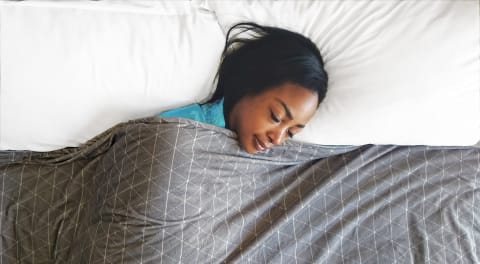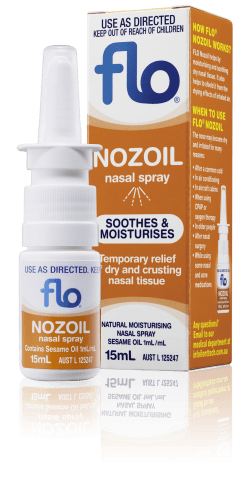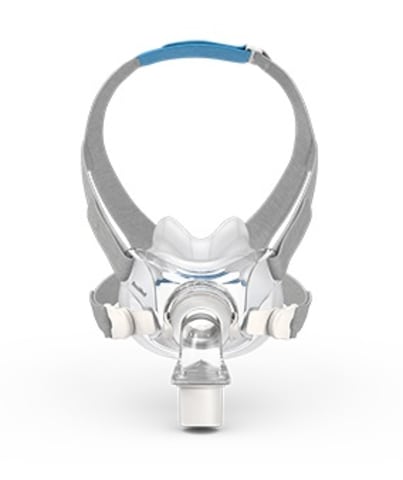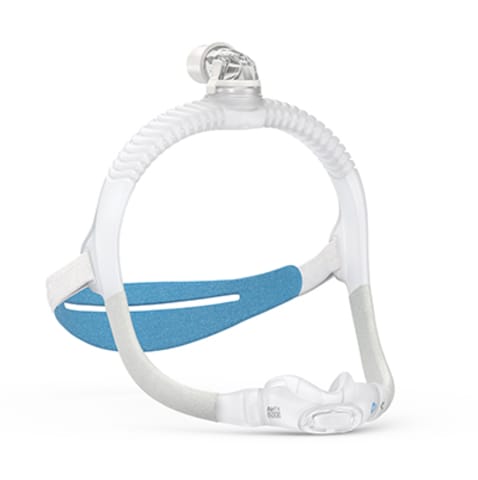Resmed Masks
Frequently Asked Questions (FAQ)
1. What types of ResMed CPAP masks are available?
ResMed offers several types of CPAP masks to suit different breathing styles, facial shapes, and sleeping habits. The most common are full-face masks, nasal masks, and nasal pillow masks. Full-face masks, such as the AirFit F20, cover both the nose and mouth and are best for people who breathe through their mouths during sleep or experience frequent nasal congestion. Nasal masks, like the AirFit N20, cover only the nose and are ideal for those who naturally breathe through their noses. Then there are nasal pillow masks, such as the AirFit P10, which are the most minimal option, resting just at the openings of the nostrils and offering a lightweight feel with minimal facial contact. Some ResMed masks also feature a top-of-head hose connection, providing additional freedom of movement for active sleepers. With such variety, most CPAP users can find a ResMed mask that meets their comfort and therapy needs.
2. What materials are ResMed masks made of?
ResMed designs its masks using high-quality, medical-grade materials that are both safe and comfortable for regular use. Most cushions are made from soft, hypoallergenic silicone that conforms gently to the face to create a reliable seal. For users with sensitive skin or those prone to irritation, ResMed offers a unique alternative in the form of UltraSoft memory foam cushions found in their AirTouch series. These cushions adapt to your individual facial contours and can help reduce red marks or pressure spots. The frames are typically made of lightweight, durable plastic, while the headgear uses breathable, elastic fabric that provides both support and flexibility. The combination of these materials is designed to make the masks both comfortable and durable, even with nightly use.
3. How can I ensure my ResMed mask is comfortable?
Comfort is key to successful CPAP therapy, and fortunately, ResMed masks are designed with user comfort in mind. To achieve a good fit, start by placing the mask gently on your face and adjusting the headgear so that it creates a secure seal without overtightening. A mask that’s too tight can cause red marks and discomfort, so it’s best to aim for a snug but gentle fit. If you experience pressure on certain areas, you might consider using accessories like SoftWraps, which are fleece covers for the headgear straps, or Gecko nasal pads, which cushion the nose bridge. Switching to a memory foam cushion can also help if you have sensitive skin. Regularly cleaning the cushion and checking for wear will also ensure that the mask continues to feel and perform its best over time.
4. How do I fit my ResMed CPAP mask correctly?
Proper mask fit is essential for comfort and effective therapy. When fitting your ResMed mask, it’s best to do so while lying down in your usual sleeping position, as this mimics how your face naturally settles during sleep. Start with the headgear straps loose and gently place the mask on your face. Gradually tighten the straps just enough to form a seal—avoid cranking them down tightly, as this can cause discomfort and even leaks. If your mask has a MicroFit dial or other fine-adjustment feature, use it to make small refinements rather than pulling on the straps. After securing the fit, turn on your machine and check for air leaks. If you notice persistent leaks or discomfort, you might need a different mask size or style. A well-fitted mask should feel secure yet gentle.
5. How should I clean my ResMed CPAP mask?
Regular cleaning is important for both hygiene and the longevity of your mask. Ideally, you should clean the mask cushion and frame daily. Disassemble the mask and wash the parts with warm water and mild, fragrance-free soap. Avoid using strong household cleaners, bleach, or alcohol-based products, as these can degrade the materials and irritate your skin. After washing, rinse thoroughly and allow all parts to air dry in a clean area, away from direct sunlight. Once a week, you should also clean the headgear and any soft wraps or accessories. Keeping your mask clean not only extends its lifespan but also helps maintain a good seal and improves your overall comfort.
6. When should I replace my ResMed mask or its parts?
Over time, the components of your CPAP mask will naturally wear out and replacing them regularly is essential for maintaining performance and hygiene. As a general guideline, you should consider replacing the cushion or nasal pillows every two to four weeks, the frame every three months, and the headgear every six months. Signs that it’s time to replace a part include visible wear, loss of elasticity, persistent leaks despite proper cleaning, or discomfort that wasn’t there before. If the cushion feels stiff, discolored, or loses its softness, it’s likely time for a new one. Many users find that setting reminders or subscribing to a replacement schedule helps them stay on top of maintenance and avoid unexpected therapy disruptions.
7. Can I travel with my ResMed CPAP mask?
Yes, traveling with your ResMed CPAP mask and machine is very doable, and many users successfully maintain their therapy while on the go. Pack your mask and machine in a dedicated CPAP travel case or padded carry-on to protect it during transit. It’s a good idea to carry a copy of your prescription and a note from your doctor, especially when flying. Most airlines allow CPAP machines as medical devices, which means they don’t count toward your carry-on limit. At security checkpoints, you’ll need to remove the machine for screening, but you can usually leave the mask and tubing packed. For longer flights, check with the airline about power outlets, or consider using a travel-specific CPAP machine or battery. Don’t forget to bring mild soap or cleaning wipes to maintain your mask while away from home.
8. What accessories can improve my ResMed mask experience?
A variety of accessories are available to enhance your CPAP therapy experience. SoftWraps can make the headgear more comfortable by reducing skin irritation from the straps. Gecko nasal pads cushion the bridge of your nose and help prevent soreness, especially for those using full-face masks. Chin straps are helpful for mouth breathers who use nasal masks, as they gently encourage the mouth to stay closed. Travel cases make it easier and safer to bring your mask and machine along on trips. It’s also a good idea to keep spare cushions and headgear on hand in case of wear or damage. Many of ResMed’s newer masks include user-friendly features like magnetic clips, quick-release elbows, and flexible tubing connections, all of which contribute to a smoother, more comfortable experience.
9. What innovations do ResMed masks include?
ResMed is known for its continuous innovation in CPAP mask design. One standout feature is the UltraSoft memory foam cushion, found in the AirTouch series, which offers a plush, adaptive fit that conforms to the face more comfortably than traditional silicone. The InfinitySeal cushion, used in several masks, is designed to maintain a reliable seal across various pressure settings and face shapes. ResMed’s QuietAir technology, integrated into the mask’s exhalation system, helps reduce noise and draft, making the experience more pleasant for both the user and their bed partner. Magnetic headgear clips allow for quick and easy donning and removal, especially useful for people with limited dexterity. Some models also feature quick-release elbows, which let you disconnect from the machine without taking off the entire mask—ideal for those middle-of-the-night bathroom trips.
10. What is the warranty on ResMed CPAP masks?
ResMed masks generally come with a 90-day limited warranty, covering any manufacturing defects under normal usage. This means that if your mask or any of its components fail due to a defect within this period, it can typically be repaired or replaced. Memory foam cushions, due to their disposable nature, may carry a shorter warranty. It’s always a good idea to retain your purchase receipt and consult your supplier or CPAP clinic for assistance with warranty claims. If you notice issues such as material splitting, connector problems, or faulty adjustments within the warranty period, don’t hesitate to reach out for support.
11. Are there ResMed masks for women or smaller faces?
Yes, ResMed recognises that not every face fits the standard size, and they’ve developed a “For Her” series of masks to better suit smaller facial structures. These masks are available in popular styles like full-face, nasal, and nasal pillow, but they come with slightly smaller frames, more adjustable headgear, and softer strap options. In addition to the physical differences, some models in this line feature a feminine color accent, such as lavender, to offer a more personalised touch. These masks are designed with the same high-quality materials and performance features as the standard versions, so users don’t have to compromise on comfort or seal integrity. If you’ve struggled to get a good fit or found standard masks too bulky or loose, a “For Her” version could provide the perfect balance of comfort, fit, and functionality.
12. How do I know which ResMed mask is right for me?
Finding the right ResMed mask starts with understanding your own sleep and breathing habits. If you tend to breathe through your mouth while sleeping, or you suffer from frequent nasal congestion, a full-face mask might be best, as it covers both your nose and mouth to ensure a steady airflow. On the other hand, if you mostly breathe through your nose and prefer a lighter, less intrusive option, a nasal or nasal pillow mask may offer more comfort. Your preferred sleep position also plays a role—side sleepers often benefit from smaller, more flexible masks, while back sleepers may tolerate larger designs without issue. Other considerations include whether you wear glasses, have facial hair, or enjoy reading in bed, as these factors can affect mask comfort and usability. Consulting with a CPAP specialist or trying a few styles through a mask fitting service can help narrow down the options and lead you to the best fit for your lifestyle and needs.
13. What should I do if I feel claustrophobic using a CPAP mask?
Feeling claustrophobic when starting CPAP therapy is more common than you might think, especially for new users or those using full-face masks for the first time. The good news is that there are several strategies to help ease this discomfort. Start by wearing the mask during the day while doing something relaxing like watching television or reading—this can help you acclimate to the sensation in a low-pressure environment. Using a smaller, more open design like a nasal pillow mask can also reduce the feeling of confinement, as it touches less of your face and allows for a clearer field of view. Practicing slow, deep breathing while the mask is on can help calm the mind and body. It may also help to speak openly with your clinician or CPAP provider about your concerns—they can suggest alternate mask styles, provide tips, or offer desensitisation techniques that work gradually over time. With patience and support, most users overcome this initial challenge and go on to use their masks comfortably every night.
14. Can children or teens use ResMed masks?
While most ResMed CPAP masks are designed for adults, there are specific paediatric options available for children and teenagers who require sleep apnea therapy. These masks are scaled down in size to accommodate smaller facial features and are often designed with softer materials and adjustable headgear to enhance comfort and reduce the risk of pressure marks. Because children’s faces change as they grow, regular check-ins and refittings are important to ensure continued effectiveness and comfort. Paediatric CPAP therapy should always be guided by a healthcare professional, ideally a paediatric sleep specialist, who can determine the best type of mask and pressure settings based on the child’s condition. Emotional support is also key—helping young users understand their therapy and involving them in mask selection can go a long way toward encouraging compliance and success.
15. How do I prevent red marks on my face from the mask?
Red marks or indentations on your face after using a CPAP mask are usually caused by too much pressure or improper fit. While a snug fit is necessary to ensure a proper seal, tightening the straps too much can press the mask into the skin and cause discomfort or irritation. To prevent this, start by adjusting your headgear gradually and evenly until you get a secure seal that doesn’t leave deep marks. Switching to memory foam cushions may also help, as they tend to be softer and more adaptive than silicone. Accessories like mask liners, nasal pads, or fleece strap covers can further reduce pressure on sensitive areas. Regular cleaning is another important factor—removing skin oils and residues can help the cushion maintain its grip without needing to be overtightened. If you continue to experience redness despite trying these tips, it might be worth trying a different mask style or size that better conforms to your face. A good fit should feel natural and leave you waking up refreshed—not sore or irritated.




















